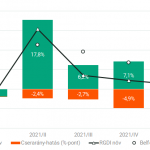NBER Working Paper No. 20316
Issued in July 2014
NBER Program(s): IFM
IMF forecasts and the EU’s Fiscal Compact foresee Europe’s heavily indebted countries running primary budget surpluses of as much as 5 percent of GDP for as long as 10 years in order to maintain debt sustainability and bring their debt/GDP ratios down to the Compact’s 60 percent target. We show that primary surpluses this large and persistent are rare. In an extensive sample of high- and middle-income countries there are just 3 (nonoverlapping) episodes where countries ran primary surpluses of at least 5 per cent of GDP for 10 years. Analyzing a less restrictive definition of persistent surplus episodes (primary surpluses averaging at least 3 percent of GDP for 5 years), we find that surplus episodes are more likely when growth is strong, when the current account of the balance of payments is in surplus (savings rates are high), when the debt-to-GDP ratio is high (heightening the urgency of fiscal adjustment), and when the governing party controls all houses of parliament or congress (its bargaining position is strong). Left wing governments, strikingly, are more likely to run large, persistent primary surpluses. In advanced countries, proportional representation electoral systems that give rise to encompassing coalitions are associated with surplus episodes. The point estimates do not provide much encouragement for the view that a country like Italy will be able to run a primary budget surplus as large and persistent as officially projected. This paper is available as PDF (222 K)
Nem található esemény a közeljövőben.
A KRTK Közgazdaság-tudományi Intézet teljesítményéről A KRTK KTI a RePEc/IDEAS rangsorában, amely a világ közgazdaság-tudományi tanszékeit és intézeteit rangsorolja publikációs teljesítményük alapján, a legjobb ... Read More »

Tisztelt Kollégák! Tudományos kutatóként, intézeti vezetőként egész életünkben a kutatói szabadság és felelősség elve vezetett bennünket. Meggyőződésünk, hogy a tudomány csak akkor érhet el ... Read More »

Srí Lanka: a 2022-es gazdasági válság leckéje – A. Krueger Lessons from Sri Lanka Anne O. Krueger Jul 25, 2022 – Project Syndicate ... Read More »

A permanens válság korában élünk – J. Meadway We’re living in an age of permanent crisis – let’s stop planning for a ‘return ... Read More »

A 2021 végén, illetve 2022 elején tapaszalt 6, illetve 7%-os cserearányromlás brutális reáljövedelem-kivonást jelentett a magyar gazdaságból. A külső egyensúly alakulásával foglalkozó elemzések többnyire ... Read More »
